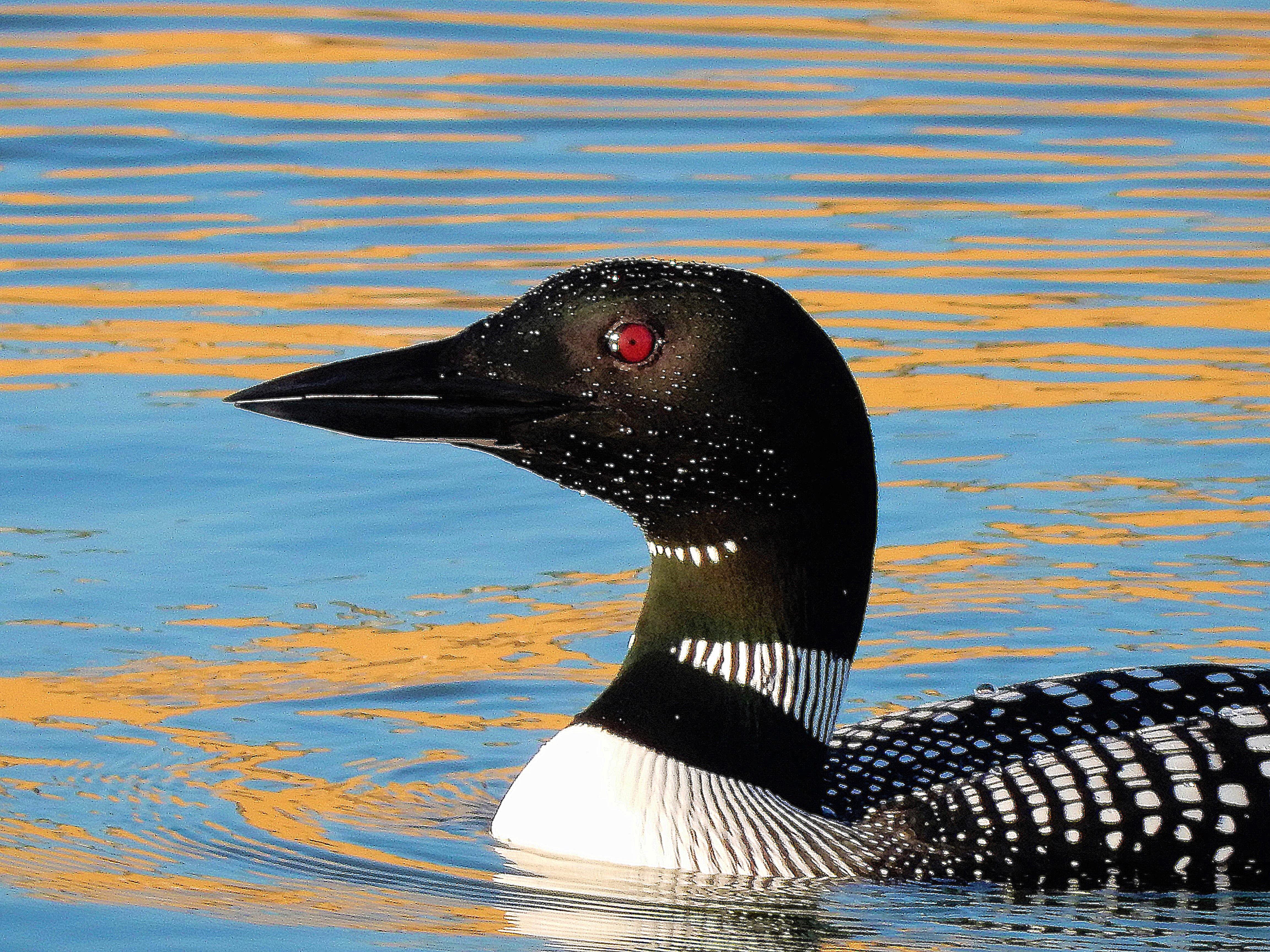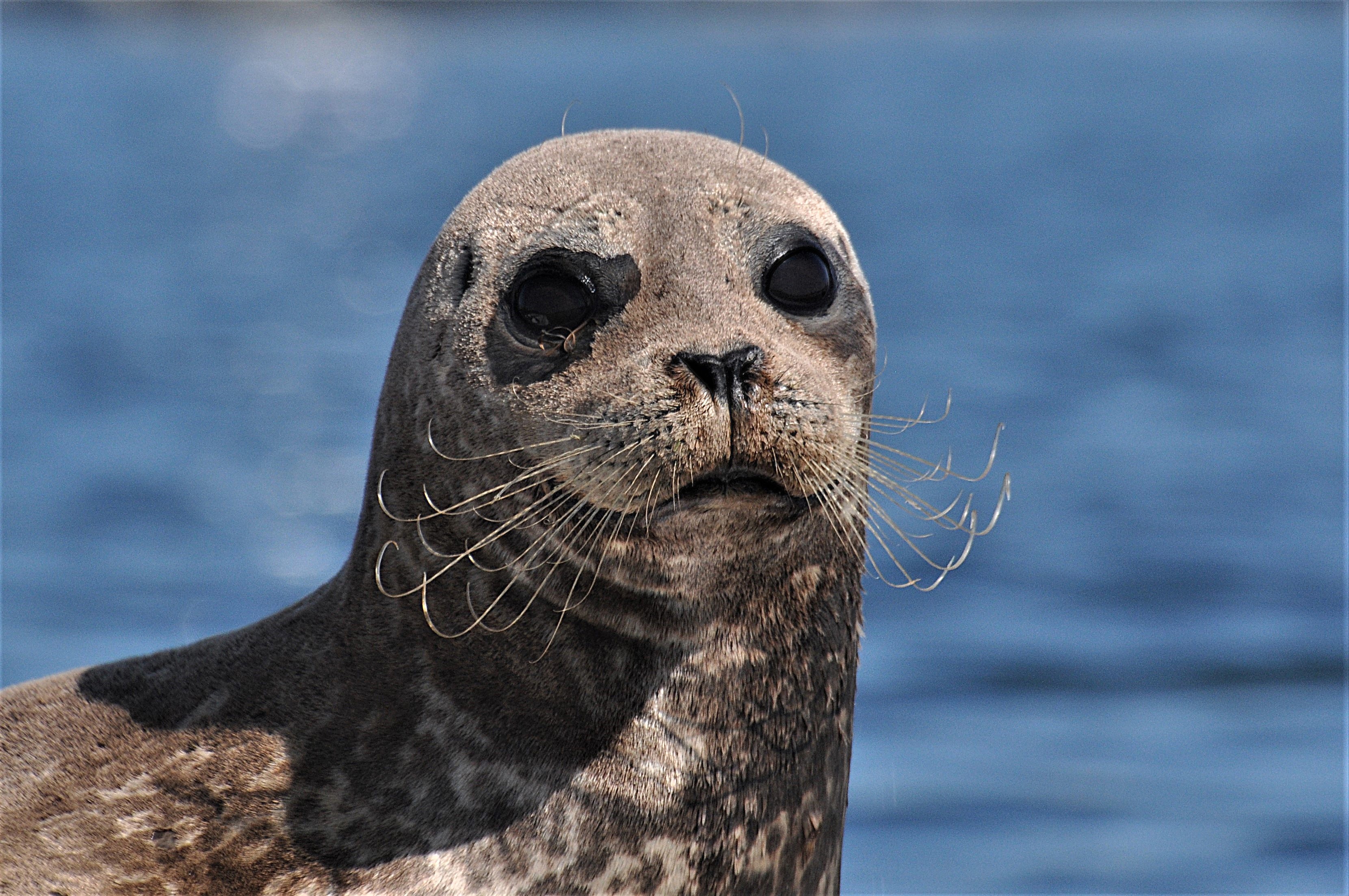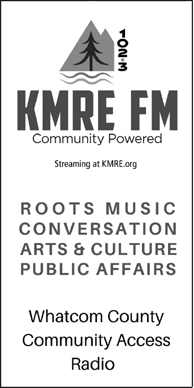Beaks and Bills
by Joe Meche
I’ve launched my kayaks and canoes in a number of spots east and west of the Cascades, from lakes in the high Okanogan country to the small, hidden lakes in the Columbia National Wildlife Refuge. I’ve been fortunate enough to paddle with common loons, American coots, pied-billed grebes and a good number of other birds and their chicks. It’s a real joy to paddle the freshwater lakes during the breeding season. Given how exciting that can be, however, I’ve found that I generally prefer to wet my paddle in saltwater. The avian life and the scenery are not the same, for sure, but there’s an altogether different feeling when you’re paddling on tidewater. Here are three favorite locations I would like to share that are close to home and offer ease of accessibility, from launching to loading.

photo: Joe Meche
Common Loon
Semiahmoo and Blaine harbor have long been at the top of my list for birding from the shore from early fall to late spring. The same applies to kayaking during the same time period. From a kayak, your perspective changes when you are actually on the water with the birds. The best part about this combination is the fact that you can access both from either side of the channel that is the entrance to Drayton Harbor. I enjoy putting in at the boat launch at Blaine harbor when the breakwater is teeming with nesting double-crested cormorants, gulls, and more recently the inimitable black oystercatchers. If it’s a windy day, the boat launch is better since you’ll be protected by the perimeter breakwater.
The sandy beach at Tongue Point on the other side of the channel is a perfect spot to launch from the tip of the Semiahmoo Spit. This spot allows quicker and safer access during late fall and spring to find the wintering birds that are feeding and resting inside the vast reaches of Drayton Harbor. There is the added advantage of having protection from the usual west-northwest wind. If you find a nice place to pull in your paddle and drift on a calm day, you’ll find that the diving birds will often pop up unexpectedly right off your bow. Seals will also entertain you as they haul out onto the floating breakwater that surrounds the marina. This is also a safe place to paddle on foggy days by staying close to the shoreline.
The first place I put a paddle in the water after coming to Bellingham 48 years ago was at Wildcat Cove on the north side of Larrabee State Park. It was a different type of paddle, however, since I owned a 17-foot Old Town canoe at the time, but the connection was there. Since that introduction, I’ve paddled numerous times from the public boat launch which is always different depending on the tide. The experience is different, as well, depending on the season. Better weather in the summer months understandably attracts more users. Of course, this state park boat launch is available for multiple uses so no complaints will be allowed.
Just outside Wildcat Cove is the Gargoyle Rock and farther north past Pleasant Bay is Whiskey Rock. Both of these off shore formations have hosted nesting black oystercatchers. Sad to say, Gargoyle has become too accessible and popular for humans for these sensitive birds to continue nesting there. Whiskey Rock, however, still holds possibilities as most of the rock is too steep for climbing. Paddling north out of the cove you will be treated to some of finest sandstone sculptures along the Chuckanut shoreline. Years upon years of wind and waves have eroded the sandstone to produce incredible examples of the power of nature. These works of art continue along the shoreline almost all the way to south Bellingham.
It was on one of those early paddles out of Wildcat Cove that I first experienced the phenomenon of bioluminescence, which occurs when certain marine organisms emit light if they’re disturbed. This happens primarily during late summer in warmer and calm water conditions when the phytoplankton (algae) is most abundant. I was hooked the first time I witnessed it when every stroke of my paddle created neon-like flashes. Even the bow wake lit up as I glided through the waters on one memorable evening toward a campfire and hot dog roast with friends at Clayton Beach.
For me, the primary destination for birds has been to paddle north into Chuckanut Bay to Chuckanut Island and the Chuckanut Rocks. There have been few things more appealing than an early morning paddle to visit the nesting birds, which include black oystercatchers, three species of cormorants, and pigeon guillemots. Post-breeding harlequin ducks are plentiful and provide a nice mix with the seabirds. And again, surreal sandstone sculptures surround the island and the rocks. These off shore rocks also play host to a variety of shorebirds.

photo: Joe Meche
Harbor Seal
The Chuckanut Island Preserve is owned by the Nature Conservancy so access and use are restricted to some degree. Volunteer stewards regulate the comings and goings of humans to keep the preserve in its natural state. Iconic and founding members of the North Cascades Audubon Society, George and Lois Garlick, were stewards for many years. I had the pleasure of being introduced to the island personally by George as he took me out in his small skiff . We did a walking tour to the center of the island where an active bald eagle nest sat for years. The nest and the Garlicks are gone now, but those special memories will always remain.
If you paddle south out of Wildcat Cove, you’ll get deeper into Samish Bay and find more of the incredible sandstone formations. Cindy and I have made this paddle before to get off – shore from Clayton Beach and await the full moon as it rose above Chuckanut Mountain. It was remarkable to be on the water as the sun set and it became darker and darker before the moon cleared the mountain! The timing was perfect because we paddled through phytoplankton all the way back to the boat launch. An important thing to remember about this location is that the access gate will be locked at dusk … so make sure you’re back before then or have your vehicle parked outside the gate.
An easy drive down Chuckanut and Highway20 takes you to the north side of Deception Pass State Park and a beautiful and mostly secluded Bowman Bay. There is a very small campground there, but also a wide open beach for launching your chosen watercraft or just beachcombing or picnicking. Trails lead in both directions to other parts of the state park. On our last visit, a northern elephant seal was asleep on the beach and monitored on both sides by volunteers to keep curious humans away. On a recent, cloudy morning we had time to hike and take a lunch break before getting into our kayaks in the afternoon. We’ve paddled with as many as six species of jellyfish within the bay.
With my Top Three on record, I feel the need to offer an Honorable Mention to the closest launching site to home … the Community Boating Center in Fairhaven. Not only is the proximity appealing but it also offers a different perspective of Bellingham Bay. It’s more of an urban paddle, and, if the tide is right, you can paddle into Padden Lagoon right up to the mouth of Padden Creek.
As always, keep in mind that we are blessed with paddling opportunities galore. In fact, with lighter watercraft available, there’s never a shortage of places to be on the water. However, before you put on your PFD (Personal Flotation Device) and launch your kayaks in any saltwater location, it’s very important to pay attention to the tides and the wind … preparation is the key. I offer as a caveat my own firsthand experiences when I wasn’t paying attention, so I know of which I speak.
Paddle on!
__________________________________________-
Joe Meche is a past president of the North Cascades Audubon Society and was a member of the board of directors for 20 years. He has been watching birds for more than 70 years and photographing birds and landscapes for more than 50 years. He has written over 250 columns for Whatcom Watch.





























